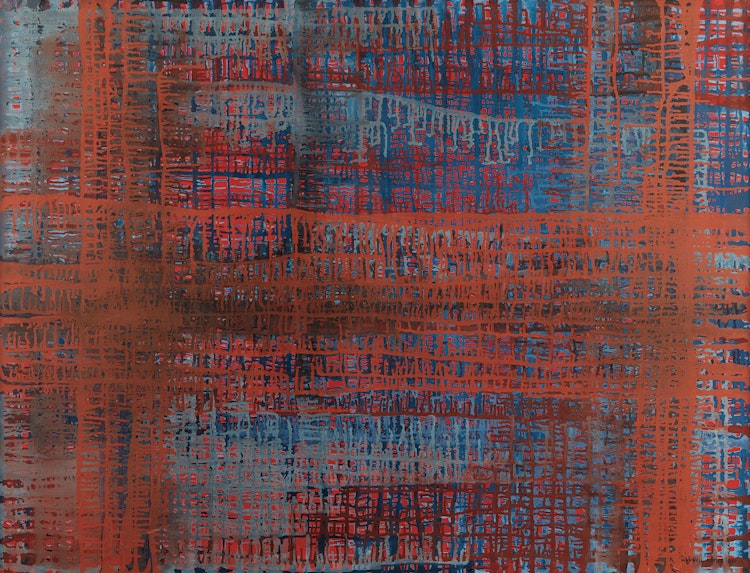Northern Painting by Maxwell Bennett Bates

Maxwell Bates
Northern Painting
oil on canvas
signed and dated 1960 lower right; titled on the stretcher
36 x 48 ins ( 91.4 x 121.9 cms )
Auction Estimate: $7,000.00 - $9,000.00
Price Realized $9,200.00
Sale date: May 25th 2017
David Burnett and Marilyn Schiff, Contemporary Canadian Art, Edmonton, 1983, pages 124-25
In “Northern Painting”, the artist has let the medium take control of the compositional outcome with the strategic placement of line as the drips form a cube-like grid from the the initial stroke of pigment. Still maintaining his penchant for bright expressive colours, the vibrant blue and red employed creates a harmonious all-over energy. Though a more fleeting period for Bates, this exploration speaks to the growing trend and importance of abstract painting in Canada. Moreover, Bates' contribution also tells of a certain regionality of art centres within Canada and the distinctive styles which emerged as a result, enriching the overarching dialogue of Canadian art history.
Share this item with your friends
Maxwell Bennett Bates
(1906 - 1980) RCA
Maxwell Bates was born in Calgary, Alberta in 1906. He studied at the Provincial Institute of Technology and Art in Calgary under Lars Haukeness in 1926-7. By the end of the twenties he and his friend Roy Stevenson were, according to R. L. Bloore "the most advanced painters in Western Canada." His abstracts were seen in Calgary as early as 1928. He spent the years 1931-1939 in London, exhibiting regularly with the Twenties Group. As a member of the British Expeditionary Force sent to France in 1940 he was captured by the Germans and was interned in a prison camp from 1940-1945. Returning to Calgary in 1946 he worked as an architect. He then went to the United States and studied with Max Beckmann and Abraham Rattner at the Brooklyn Museum Art School, 1949-50.
For many years he was interested in Klee, Rouault, Beckmann, Kokoschka and Picasso. He collected Japanese colour prints and became very interested in the philosophy of art about which he wrote articles for Canadian Art and other magazines and periodicals. In painting he was influenced by the drawings of Michelangelo, Rembrandt, and all the work of Goya, Daumier, Degas, J. L. Forain and Post-Impressionists. He was interested in street scenes, landscapes, still-lifes, and figure painting in what could be called a romantic vein. His media were oils, watercolours, chalks, and pen and inks. In printmaking he worked chiefly with lithography. An architect, MRAIC, M Inst. R.A., he designed St. Mary’s Cathedral, Calgary in partnership with A.W. Hodges, F.R.I.B.A.
He settled in Victoria, B.C., in 1961. His work has been exhibited in London, Paris, Tokyo, Mexico City, Manchester, Auckland, Philadelphia and all major Canadian cities. Retrospective exhibitions of his work were held in Regina and Edmonton (1960-61), Victoria (1966), Winnipeg (1968) and Vancouver (1973). He received many awards for his painting and was a Fellow of the International Institute of Arts and Letters and a member of the Royal Canadian Academy. The National Gallery of Canada has his canvas “Still Life” in their collection. He received an Honorary Doctorate from the University of Calgary in 1971.
Source: "A Dictionary of Canadian Artists, Volume I: A-F", compiled by Colin S. MacDonald, Canadian Paperbacks Publishing Ltd, Ottawa, 1977

